Hatra: Ancient Powerful Caravan City That Could Withstand Invading Roman Armies
A. Sutherland - AncientPages.com - Hatra called the "City of the Sun" (139 BC - 226 AD) stands in the flat area of southern Jazirah, on the west bank of Wadi Tharthar and in the desert between the middle Tigris and Euphrates Rivers in Iraq.
The city of Hatra played an important role in the trade routes as a major caravan city.
The sovereign is represented dressed in a long, beautifully embroidered tunic, from beneath which protrude baggy trousers. The female clothing consists of two or three-layered garments, a high headdress with veil, while princesses are decorated with plenty of jewelry. Image credit: Iraq Museum
Hatra was once the religious, military, and trading center of the Parthian Empire. The ruined city lies 180 miles (290 km) northwest of Baghdad and 68 miles (110 km) southwest of Mosul.
The city very likely evolved from an earlier temporary shelter. Strategically located at the center of a small independent state in the Parthia, Hatra flourished between the rival powers of Rome and Parthia from the beginning of the 1st century AD, when they divided the legacy of the Seleucid kings (from 312 BC to 63 BC), successors of Alexander the Great, through the 3rd century.
A large fortified city under the influence of the Parthian Empire and capital of the first Arab Kingdom, Hatra withstood invasions by the Romans in 116 AD and 198 AD thanks to its high, thick walls reinforced by towers. The remains of the city, especially the temples with Hellenistic and Roman architecture blend with Eastern decorative features. All these architectural elements attest to the greatness of its civilization.
 Temple ruins at Hattra, Iraq circa 1988. Image credit: Victrav - source
Temple ruins at Hattra, Iraq circa 1988. Image credit: Victrav - source
The tough city withstood invasions by the Romans in A.D. 116 and 198 thanks to its high, thick walls reinforced by towers. Today, the remains of the city, especially the temples where Hellenistic and Roman architecture together with Eastern decorative details, attest to the Hatra's greatness.
The city resisted another siege by a Roman emperor, Septimius Severus, at the end of the 2nd century, only to be taken and sacked by the Sasanians in 240/241 AD. Later, Hatra was no longer systematically inhabited.
It was a strongly fortified oasis settlement, one of the earliest settlements of Arabic-speaking nomadic tribes.
The area between the Tigris and Euphrates became an important province of the Parthian Empire called Arabaya or ‘Land of the Arabs’ and beautiful Hatra flourished as the capital of this kingdom under Arab lords or chiefs and later kings.
 Hatra ruins. Image credit: Spc. Leigh Campbell - source
Hatra ruins. Image credit: Spc. Leigh Campbell - source
It is believed that this early Arab Kingdom included the great cities of Baalbek, Palmyra, and Petra.
The city's fortifications were built to withstand the invading Roman forces. and in fact, the city successfully held out against attempts by the Romans to take it under the control of both Emperors Trajan and Septimius Severus, in 117 AD and 198-201 AD.
After the fall of the Parthians (247 BC – 224 AD) and the rise of the Sassanians (224 AD), Hatra became allied with Rome and defeated the Persians at the battle of Shahrazoor in 238 AD but unfortunately was destroyed by the Sassanids ‘ king Ardashir and his son Shapur I in 240 AD.
Eventually, the city was abandoned, though, according to an ancient Arabic inscription, Hatra remained briefly reoccupied in the 12th century, and many different deities were worshipped by the people representing various nomadic tribes who came to Hatra.
Hatra had many temples and these were dedicated to Nergal (Assyrian-Babylonian and Akkadian), Hermes (Greek), Atargatis (Syro-Aramaean), Allat, Shamiyyah (Arabian), and Shamash (the Mesopotamian sun god).
The city was a single but powerful entity of influential Greek, Mesopotamian, Canaanite, Aramean and Arabian pantheons. Among the ruins of temples, many stone statues have been discovered and many of them are now in the Baghdad and Mosul museums along with numerous inscriptions.
Archaeological excavations conducted in the 1970s revealed some of Hatra’s ruins and they date back to the Parthian period. The buildings of the ancient Hatra are of mud-brick and limestone and include recognizable fragments of gates, tombs, houses that can say much about this Parthian city.
The city’s inner and outer walls - supported by more than 160 towers - are approximately 6.4 km and nearly 2 kilometers (1.2 mi) in diameter.
Temples cover a large area dominated by the Great Temple, a large building with columns 30 meters tall.
The city's domestic architecture originates from the archaeological excavations of 15 houses. The private houses of Hatra were built of mud brick on a stone base; the roofs are vaulted in the rubble with gypsum mortar. Though the houses range in size from 220 to 2700 m, the ground plan is the same.

Stone figures from the ancient site of Hatra line a corridor of the Iraq National Museum the Iraqi capital. AP Photo/Maya Alleruzzo
The house is articulated, according to Mesopotamian tradition, around a central courtyard with the main reception room. The entrance was usually located in a corner of the courtyard, through an L-shaped route that impeded a direct view of the interior from the street.
Despite the destruction caused by ISIL, archaeologists from museums in Iraq have managed to protect many of Hatra's artifacts. These collections tell the story of human civilization, from the earliest settlements to the rise and fall of vast empires of the region.
The art of Hatra, especially sculptures say much about the Parthian statuary. These pieces of art - the statues representing deities, sovereigns, priests, and city notable persons - were mostly found in the temples. The male figures wear long trousers and a knee-length tunic. The female clothing, on the other hand, consists of two or three-layered garments, a high headdress with veil, while princesses are depicted with rich jewelry.
The gallery in the Iraqi museum presents Hatra as the best-preserved example of a Parthian city.
It's the place where we can admire relics from the ancient caravan city that do not exist.
Written by – A. Sutherland - AncientPages.com Senior Staff Writer
Copyright © AncientPages.com All rights reserved. This material may not be published, broadcast, rewritten or redistributed in whole or part without the express written permission of AncientPages.com
Expand for referencesMore From Ancient Pages
-
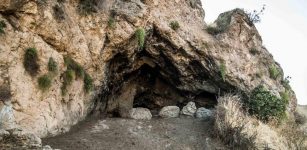 Artifacts And Remnants Of 3,000-Year-Old City Unearthed Near Great Zab River In Iraqi Kurdistan
Archaeology | Jun 5, 2017
Artifacts And Remnants Of 3,000-Year-Old City Unearthed Near Great Zab River In Iraqi Kurdistan
Archaeology | Jun 5, 2017 -
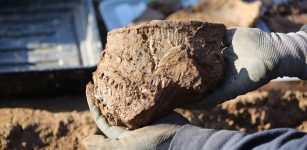 Bronze Age Finding Offer New Clues On The Beginnings Of Cardiff
Archaeology | Jul 15, 2022
Bronze Age Finding Offer New Clues On The Beginnings Of Cardiff
Archaeology | Jul 15, 2022 -
 Mystery Of The Mandala: The Circle Of Life
Ancient Symbols | Jul 7, 2018
Mystery Of The Mandala: The Circle Of Life
Ancient Symbols | Jul 7, 2018 -
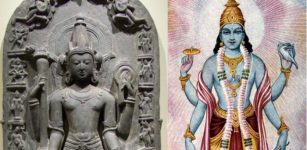 Vishnu: Supreme, Universal Hindu God Whose Avatars Reach Nations, Cultures And Races
Featured Stories | Jul 25, 2019
Vishnu: Supreme, Universal Hindu God Whose Avatars Reach Nations, Cultures And Races
Featured Stories | Jul 25, 2019 -
 Kanishka Casket – Beautiful Ancient Buddhist Treasure In Gilded Copper
Featured Stories | Jun 14, 2021
Kanishka Casket – Beautiful Ancient Buddhist Treasure In Gilded Copper
Featured Stories | Jun 14, 2021 -
 Maat – Ancient Egypt’s Most Important Religious Concept
Egyptian Mythology | Apr 4, 2018
Maat – Ancient Egypt’s Most Important Religious Concept
Egyptian Mythology | Apr 4, 2018 -
 Odin: Norse God Of War And Magic – Most Complex Figure Of The Norse Pantheon
Myths & Legends | Oct 27, 2016
Odin: Norse God Of War And Magic – Most Complex Figure Of The Norse Pantheon
Myths & Legends | Oct 27, 2016 -
 Early, Complex Brain Surgery Performed In Ancient Greece
Archaeology | Apr 8, 2020
Early, Complex Brain Surgery Performed In Ancient Greece
Archaeology | Apr 8, 2020 -
 Gigantic Viking Age Burial Ground With Artifacts And 50-Meter-Long Shipwreck Unearthed In Tvååker, Halland, Sweden
Archaeology | Oct 18, 2024
Gigantic Viking Age Burial Ground With Artifacts And 50-Meter-Long Shipwreck Unearthed In Tvååker, Halland, Sweden
Archaeology | Oct 18, 2024 -
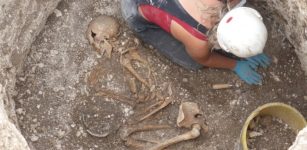 Bronze Age Human Remains Uncovered In Dorset During Excavation Of Iron Age Settlement
Archaeology | Jul 10, 2023
Bronze Age Human Remains Uncovered In Dorset During Excavation Of Iron Age Settlement
Archaeology | Jul 10, 2023 -
 Mystery Of The Lost Biblical City Of Ai – Where Was It Located?
Biblical Mysteries | Apr 23, 2017
Mystery Of The Lost Biblical City Of Ai – Where Was It Located?
Biblical Mysteries | Apr 23, 2017 -
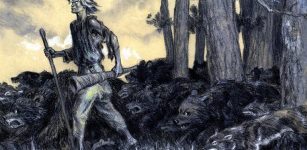 Ilmarinen – Divine Blacksmith And Trusted Friend Of Wizard Vainamoinen In Kalevala
Featured Stories | Nov 16, 2018
Ilmarinen – Divine Blacksmith And Trusted Friend Of Wizard Vainamoinen In Kalevala
Featured Stories | Nov 16, 2018 -
 Caligula’s Stunning 2,000-Year-Old Sapphire Ring Tells Of A Dramatic Love Story
Artifacts | Jul 10, 2020
Caligula’s Stunning 2,000-Year-Old Sapphire Ring Tells Of A Dramatic Love Story
Artifacts | Jul 10, 2020 -
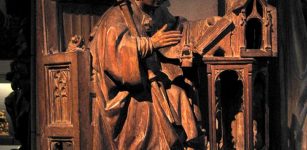 Restoration Of Valuable 4th Century Silk Tunics Attributed To St. Ambrose Takes Place In Milan
Artifacts | Apr 12, 2017
Restoration Of Valuable 4th Century Silk Tunics Attributed To St. Ambrose Takes Place In Milan
Artifacts | Apr 12, 2017 -
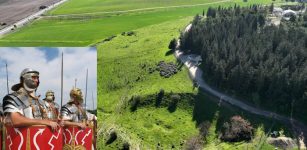 First Roman Military Amphitheater Unearthed Near Megiddo
Archaeology | Jun 1, 2022
First Roman Military Amphitheater Unearthed Near Megiddo
Archaeology | Jun 1, 2022 -
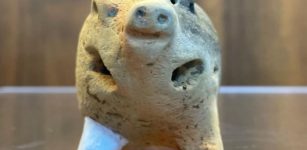 Unique Pig-Shaped Figurine Found In East China Was Probably A Child’s Toy 6,000-Years Ago
Archaeology | Jun 9, 2023
Unique Pig-Shaped Figurine Found In East China Was Probably A Child’s Toy 6,000-Years Ago
Archaeology | Jun 9, 2023 -
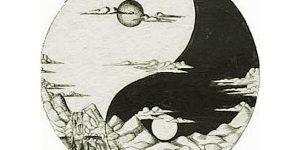 Well-Known Powerful Yin Yang Symbol Dates Back To Ancient China
Ancient Symbols | Sep 23, 2016
Well-Known Powerful Yin Yang Symbol Dates Back To Ancient China
Ancient Symbols | Sep 23, 2016 -
 New Project Aims To Solve Mysterious Millennia-Old Rock Carvings Of Argyll, Scotland
Archaeology | Mar 20, 2017
New Project Aims To Solve Mysterious Millennia-Old Rock Carvings Of Argyll, Scotland
Archaeology | Mar 20, 2017 -
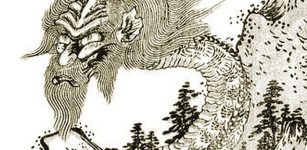 Legend Of The Candle Dragon That Could Lighten The Darkest Gate Of Heaven
Chinese Mythology | Jan 15, 2016
Legend Of The Candle Dragon That Could Lighten The Darkest Gate Of Heaven
Chinese Mythology | Jan 15, 2016 -
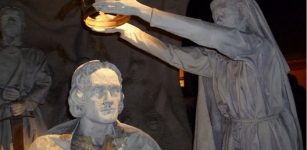 On This Day In History: Robert I, King Of Scots Known As ‘Robert The Bruce’ Was Born – On July 11, 1274
News | Jul 11, 2016
On This Day In History: Robert I, King Of Scots Known As ‘Robert The Bruce’ Was Born – On July 11, 1274
News | Jul 11, 2016


